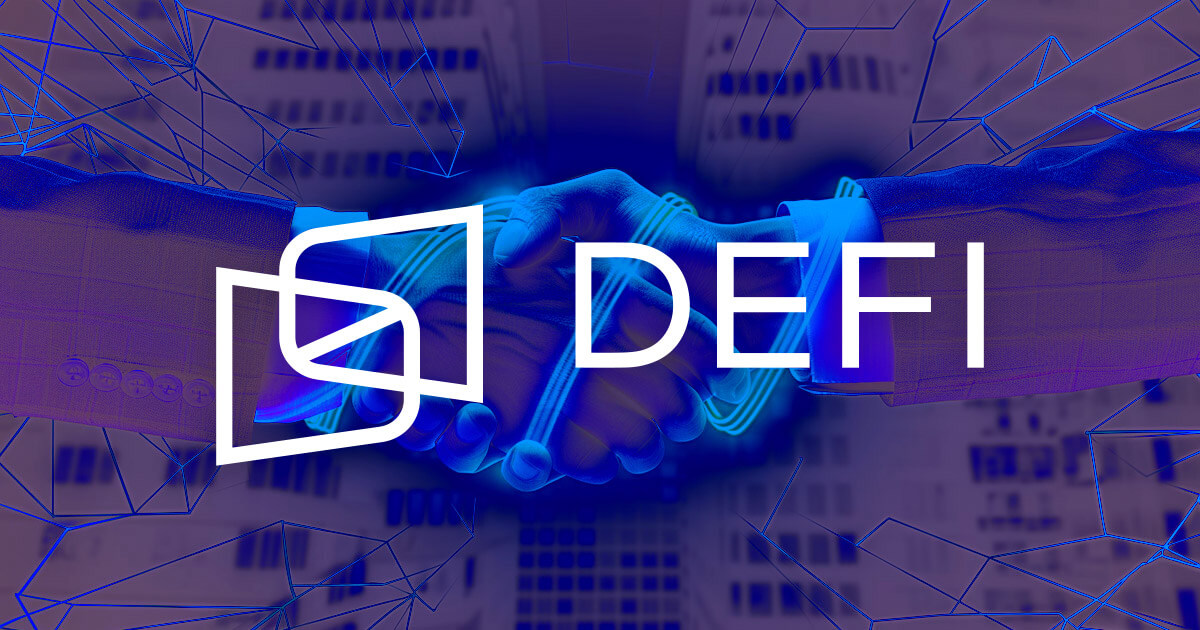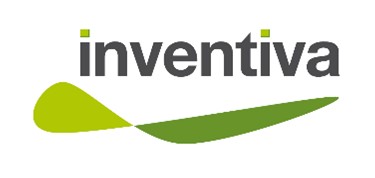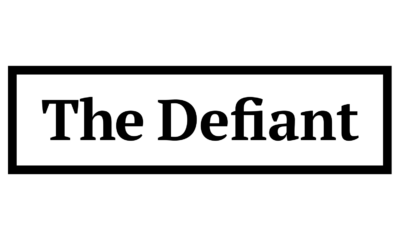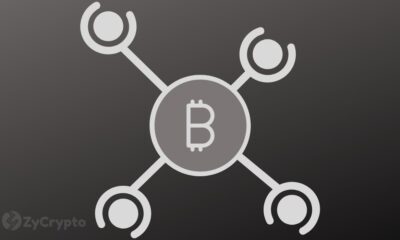DeFi
Building the Future of Financial Infrastructure with Blockchain and Digital Assets | Ripple

Ripple was founded on the belief that blockchain would become the global financial infrastructure of the future, enabling more affordable financial services for more people and businesses around the world. Early on, we bet on the promise of institutional DeFi to create a better, fairer financial system, but at the time, crypto and blockchain largely lacked the infrastructure, liquidity, trust, and regulatory clarity needed for widespread institutional adoption. To put this into perspective, Bitcoin (BTC) was under $20, Ethereum didn’t exist yet, and there were only a handful of exchanges with a few million dollars in volume per year.
Fast forward 10 years and the first BTC and ETH spot ETFs Cryptocurrencies have been approved in the US; BlackRock has launched its first tokenized fund issued on a public blockchain; the EU is rolling out comprehensive crypto rules with MiCA; and financial institutions and payment companies like Fidelity, Itau Unibanco, Stripe, and PayPal are making it easier for their customers to trade, hold, and use crypto assets. Needless to say, the cryptocurrency market has come a long way, as has the broader acceptance of cryptocurrencies.
As the industry and market continue to mature, Ripple has evolved alongside it to meet the opportunities that lie ahead. Having worked with financial institutions for many years, we have repeatedly validated blockchain’s promise of faster, cheaper, and more reliable financial services. But they need a simple, reliable, and trusted digital asset infrastructure to integrate blockchain into their businesses. Just as there are key components to running an internet-based business (storage, compute, networking, etc.), institutions need on-ramps, off-ramps, custody, and liquidity.
With these foundational elements, those building the financial services of the future can create, store, exchange and move value around the world to solve today’s real and pressing problems, and imagine and invent tomorrow’s possibilities.
Evolution of the Ripple product range
The first use case we addressed was cross-border paymentsby leveraging the XRP Ledger (XRPL) and its native system XRP digital asset to move value seamlessly. XRPL’s out-of-the-box capabilities (speed, low cost, transparency, and scalability) make it an ideal tool to address the challenges inherent in traditional financial systems.
Payments were an ideal entry point, given its obvious problems (high fees, slow transfer times, lack of transparency and high error rates), based on decades-old technology. Today, our cross-border payments solution, Ripple Paymentshas near-global coverage with over 80 payment markets, representing over 90% of daily FX market coverage, processing over $50 billion in volume.
While we continue to view payments as the first (and most proven!) flagship application of cryptocurrency, Ripple is now about much more than payments. We provide financial institutions with a simple, secure, and compliant digital asset infrastructure that dramatically improves how these customers create, store, exchange, and move value.
An important step in making this future a reality was the Metaco acquisition in 2023 – a digital asset custody technology provider serving leading banks around the world including BBVA Switzerland, HSBC, Société Générale – FORGE and many others. We are now better positioned than ever to execute the product roadmap for our clients globally, and going forward, Metaco will be known as Ripple GuardWe continue to grow the childcare team and operations, as well as opening a new office in Geneva (coming soon!) to accommodate our growing childcare footprint.
We also decided to integrate our Liquidity Hub product with our payments solution, bringing together the benefits of both offerings in a single experience. Ripple’s experience in building a payments business and mastering how to deliver liquidity to the right destination, at the right cost, and at the right time has taught us a lot about liquidity management. We are applying the lessons we learned from our experience to our customers’ experiences.
Bridging the gap between TradFi and Crypto
Earlier this year, we announced our intention to launch a stablecoincalled Ripple USD (RLUSD) on the XRP Ledger and Ethereum blockchains. This is a significant milestone for Ripple’s business and an important next step in bridging the gap between traditional finance and crypto. Once Ripple USD is launched, we plan to integrate it with Ripple Payments, alongside XRP, to meet growing customer needs and evolving use cases for cross-border payments.
We spent years building a global payment networkwhich allows customers to withdraw funds in the destination and currency of their choice. Alongside other stablecoins, Ripple USD will enable efficient on-ramps and facilitate fast, low-cost global payments for many of Ripple Payments’ customers.
XRPL is the blockchain of choice for Institutional DeFi Use cases due to its reliability, high performance, low transaction costs, and speed. Institutional DeFi requires high-quality stablecoins for scaling, trading, and more. Bringing trusted stablecoins to XRPL from companies with a compliance-first mindset opens up new capabilities, use cases, and users for more DeFi developers. XRP remains the universal bridging asset for XRPL and is particularly useful for creating liquidity for long-tail assets. For example, in regions where the cost of moving money across borders is particularly high due to the lack of liquidity between currencies, XRP remains the most effective.
XRP Ledger: Built for Business
XRPL remains the primary blockchain on which our products are built because it is fast, highly efficient, field-tested, and supports large-scale use cases. Since 2012, it has processed over 2.8 billion transactions without failure or security breaches.
It also has a number of very sophisticated financial tools built into the protocol level, such as its decentralized exchange (DEX)XRPL was the first blockchain to feature a built-in DEX, allowing users to offer and trade any type of token without a middleman or centralized exchange. Additional features (like automatic bypass And Find your way) allows users to find better deals by finding trades with multiple tokens in a row.
Ripple, alongside many projects like Zoniqx, Financing the orchestra, CredeFi, Sologène, Archax and many others, are building applications on XRPL to bring TradFi into the modern financial toolkit. Over time, we see an opportunity to integrate more of the sophisticated technical and financial features of the XRP Ledger directly into Ripple’s business, bringing the benefits of decentralized finance to our customers around the world in a secure and compliant manner.
Crypto Building Blocks for Enterprise
Ripple has proven its longevity by weathering the storms through every cryptocurrency bull and bear cycle. Since day one, we have taken a long-term view and deliberately focused on working with financial institutions, regulators, and policymakers to transform the existing system from within.
Our ambition is to become the leading provider of digital asset infrastructure for financial services. We envision being a one-stop shop for companies that want to benefit from the advantages of integrating blockchain into their business, but do not have the expertise, resources or interest to build and maintain the technology in-house.
Ripple is one of the few players in the industry uniquely positioned to provide a holistic digital asset infrastructure that bridges TradFi and crypto thanks to our years of experience in both worlds. Ripple has the credibility, reputation, trust, advanced understanding, and operations for core services like crypto on-ramps and off-ramps, liquidity, custody, and compliance. And we will continue to evolve our product suite to deliver the solutions our customers want and need.
We entered this business because we believe that blockchain technology and digital assets can provide faster, better and cheaper financial services than existing technologies. We will continue to provide best-in-class solutions, combined with innovative technology to bridge the gap between TradFi and Web3 to make this vision a reality.
Contact our team to find out more and Start building your blockchain business today.
DeFi
Pump.Fun is revolutionizing the Ethereum blockchain in terms of daily revenue

The memecoin launchpad saw the largest daily revenue in all of DeFi over the past 24 hours.
Memecoin launchpad Pump.Fun has recorded the highest gross revenue in all of decentralized finance (DeFi) in the last 24 hours, surpassing even Ethereum.
The platform has raised $867,429 in the past 24 hours, compared to $844,276 for Ethereum, according to DeFiLlama. Solana-based Telegram trading bot Trojan was the third-highest revenue generator of the day, as memecoin infrastructure continues to dominate in DeFi.
Pump.Fun generates $315 million in annualized revenue according to DeFiLlama, and has averaged $906,160 per day over the past week.
Income Ranking – Source: DeFiLlama
The memecoin frenzy of the past few months is behind Pump.fun’s dominance. Solana-based memecoins have been the main drug of choice for on-chain degenerates.
The app allows non-technical users to launch their own tokens in minutes. Users can spend as little as $2 to launch their token and are not required to provide liquidity up front. Pump.Fun allows new tokens to trade along a bonding curve until they reach a set market cap of around $75,000, after which the bonding curve will then be burned on Raydium to create a safe liquidity pool.
Pump.Fun generates revenue through accrued fees. The platform charges a 1% fee on transactions that take place on the platform. Once a token is bonded and burned on Raydium, Pump.fun is no longer able to charge the 1% fee.
Ethereum is the blockchain of the second-largest cryptocurrency, Ether, with a market cap of $395 billion. It powers hundreds of applications and thousands of digital assets, and backs over $60 billion in value in smart contracts.
Ethereum generates revenue when users pay fees, called gas and denominated in ETH, to execute transactions and smart contracts.
DeFi
DeFi technologies will improve trading desk with zero-knowledge proofs

DeFi Technologies, a Canadian company financial technology companyis set to enhance its trading infrastructure through a new partnership with Zero Computing, according to a July 30 statement shared with CryptoSlate.
The collaboration aims to integrate zero-knowledge proof tools to boost operations on the Solana And Ethereum blockchains by optimizing its ability to identify and execute arbitrage opportunities.
Additionally, it will improve the performance of its DeFi Alpha trading desk by enhancing its use of ZK-enabled maximum extractable value (MEV Strategies).
Zero knowledge Proof of concept (ZKP) technology provides an additional layer of encryption to ensure transaction confidentiality and has recently been widely adopted in cryptographic applications.
Optimization of trading strategies
DeFi Technologies plans to use these tools to refine DeFi Alpha’s ability to spot low-risk arbitrage opportunities. The trading desk has already generated nearly $100 million in revenue this year, and this new partnership is expected to further enhance its algorithmic strategies and market analysis capabilities.
Zero Computing technology will integrate ZKP’s advanced features into DeFi Alpha’s infrastructure. This upgrade will streamline trading processes, improve transaction privacy, and increase operational efficiency.
According to DeFi Technologies, these improvements will increase the security and sophistication of DeFi Alpha’s trading strategies.
The collaboration will also advance commercial approaches for ZK-enabled MEVs, a new concept in Motor vehicles which focuses on maximizing value through transaction fees and arbitrage opportunities within block production.
Additionally, DeFi Technologies plans to leverage Zero Computing technology to develop new financial products, such as zero-knowledge index exchange-traded products (ETPs).
Olivier Roussy Newton, CEO of DeFi Technologies, said:
“By integrating their cutting-edge zero-knowledge technology, we not only improve the efficiency and privacy of our transactions, but we also pave the way for innovative trading strategies.”
Extending Verifiable Computing to Solana
According to the release, Zero Computing has created a versatile, chain-agnostic platform for generating zero-knowledge proofs. The platform currently supports Ethereum and Solana, and the company plans to expand compatibility with other blockchains in the future.
The company added that it is at the forefront of introducing verifiable computation to the Solana blockchain, enabling complex computations to be executed off-chain with on-chain verification. This development represents a significant step in the expansion of ZKPs across various blockchain ecosystems.
Mentioned in this article
Latest Alpha Market Report
DeFi
Elastos’ BeL2 Secures Starknet Grant to Advance Native Bitcoin Lending and DeFi Solutions

Singapore, Asia, July 29, 2024, Chainwire
- Elastos BeL2 to Partner with StarkWare to Integrate Starknet’s ZKPs and Cairo Programming Language with BeL2 for Native DeFi Applications
- Starknet integration allows BeL2 to provide smart contracts and dapps without moving Bitcoin assets off the mainnet
- Starknet Exchange Validates the Strength of BeL2’s Innovation and Leadership in the Native Bitcoin Ecosystem
Elastos BeL2 (Bitcoin Elastos Layer2) has secured a $25,000 grant from Starknet, a technology leader in the field of zero-knowledge proofs (ZKPs). This significant approval highlights the Elastos BeL2 infrastructure and its critical role in advancing Bitcoin-native DeFi, particularly Bitcoin-native lending. By integrating Starknet’s ZKPs and the Cairo programming language, Elastos’ BeL2 will enhance its ability to deliver smart contracts and decentralized applications (dapps) without moving Bitcoin (BTC) assets off the mainnet. This strategic partnership with Starknet demonstrates the growing acceptance and maturity of the BeL2 infrastructure, reinforcing Elastos’ commitment to market leadership in the evolving Bitcoin DeFi market.
Starknet, developed by StarkWare, is known for its advancements in ZKP technology, which improves the privacy and security of blockchain transactions. ZKPs allow one party to prove to another that a statement is true without revealing any information beyond the validity of the statement itself. This technology is fundamental to the evolution of blockchain networks, which will improve BeL2’s ability to integrate complex smart contracts while preserving the integrity and security of Bitcoin.
“We are thrilled to receive this grant from Starknet and announce our partnership to build tighter integrations with its ZKP technology and the Cairo programming language,” said Sasha Mitchell, Head of Bitcoin Layer 2 at Elastos. “This is a major milestone for BeL2 and a true recognition of the maturity and capabilities of our core technology. This support will allow us to further develop our innovation in native Bitcoin lending as we look to capitalize on the growing acceptance of Bitcoin as a viable alternative financial system.”
A closer integration with Cairo will allow BeL2 to leverage this powerful programming language to enhance Bitcoin’s capabilities and deliver secure, efficient, and scalable decentralized finance (DeFi) applications. Specifically, the relationship with Cairo reinforces BeL2’s core technical innovations, including:
- ZKPs ensure secure and private verification of transactions
- Decentralized Arbitrage Using Collateralized Nodes to Supervise and Enforce Fairness in Native Bitcoin DeFi
- BTC Oracle (NYSE:) facilitates cross-chain interactions where information, not assets, is exchanged while Bitcoin remains on the main infrastructure
BeL2’s vision goes beyond technical innovation and aims to innovate by creating a new financial system. The goal is to build a Bitcoin-backed Bretton Woods system, address global debt crises, and strengthen Bitcoin’s role as a global hard currency. This new system will be anchored in the integrity and security of Bitcoin, providing a stable foundation for decentralized financial applications.
As integration with Starknet and the Cairo programming language continues, BeL2 will deliver further advancements in smart contract capabilities, decentralized arbitration, and innovative financial products. At Token 2049, BeL2 will showcase further innovations in its core technologies, including arbitrators, that will underscore Elastos’ vision for a fairer decentralized financial system rooted in Bitcoin.
About Elastos
Elastos is a public blockchain project that integrates blockchain technology with a suite of redesigned platform components to produce a modern Internet infrastructure that provides intrinsic privacy and ownership protection for digital assets. The mission is to create open source services that are accessible to the world, so developers can create an Internet where individuals own and control their data.
The Elastos SmartWeb platform enables organizations to recalibrate how the Internet operates to better control their own data.
https://www.linkedin.com/company/elastosinfo/
ContactPublic Relations ManagerRoger DarashahElastosroger.darashah@elastoselavation.org
DeFi
Compound Agrees to Distribute 30% of Reserves to COMP Shareholders to End Alleged Attack on Its Governance

Compound will introduce the staking program in exchange for Humpy, a notorious whale accused of launching a governance attack on the protocol, negating a recently adopted governance proposal.
Compound is launching a new staking program for COMP holders as a compromise with Humpy, a notorious DeFi whale accused of launching a governance attack against the veteran DeFi protocol.
On July 29, Bryan Colligan, head of business development at Compound, published a governance proposal outlining plans for a new compound participation product that would pay 30% of the project’s current and future reserves to COMP participants.
Colligan noted that the program was requested by Humpy in exchange for his agreement Proposition 289 — which sought to invest 499,000 COMP worth approximately $24 million into a DeFi vault controlled by Humpy, and which appears to have been forced by Humpy and his associates over the weekend.
“We propose the following staking product that meets Humpy’s stated interests as a recent new delegate and holder of COMP in exchange for the repeal of Proposition 289 due to the governance risks it poses to the protocol,” Colligan said. “The Compound Growth Program…will execute the above commitments, given the immediate repeal of Proposition 289.”
Colligan added that the proposal would expire at 11:59 p.m. EST on July 29. Had Humpy not rescinded Proposition 289, Compound would move forward with it. Proposition 290 — block Humpy using the Compound team’s multi-sig to deploy a new governor contract removing the delegate’s governance power behind Proposition 289.
Hunchback tweeted that Proposition 289 had been repealed a few hours ago. “Glad to have brought Compound Finance back into the spotlight,” they said. added. “StakedComp… finally becomes a yield-generating asset!
Markets reacted favorably to the resolution, with the price of COMP increasing by 6.2% over the past 24 hours, according to CoinGecko.
Attack on governance
Proposition 289 proposed investing 499,000 COMP from the Compound treasury into goldCOMP, a yield-generating vault of the Humpy-linked Golden Boys team.
The proposal passed with nearly 52 percent of the vote on July 28, despite two previous iterations of the proposal being defeated by strong opposition. Can And JulyThe proposals notably asked for only 92,000 COMP, with security researchers warning that any deposit of tokens into the goldCOMP vault would cede their governance power.
In May, Michael Lewellen of Web3 security firm OpenZeppelin, note The first proposal was submitted by a new governance delegate who was suddenly awarded 228,000 COMP by five wallets that got their tokens from the Bybit exchange. Combined with his own tokens, the delegate got 325,333 COMP, which is over 81% of the 400,000 tokens required for a governance proposal to reach quorum.
“We have been alerting the community to the risk that these delegates could support a potential attack on governance,” Lewellen said. “The timing of the new proposal and these recent delegations are suspect.”
Read more: Compound community accuses famous whale of attacking engineering governance
-

 News9 months ago
News9 months agoModiv Industrial to release Q2 2024 financial results on August 6
-

 News9 months ago
News9 months agoVolta Finance Limited – Director/PDMR Shareholding
-

 News9 months ago
News9 months agoApple to report third-quarter earnings as Wall Street eyes China sales
-

 News11 months ago
News11 months agoLeeds hospitals trust says finances are “critical” amid £110m deficit
-

 News11 months ago
News11 months agoInventiva reports 2024 First Quarter Financial Information¹ and provides a corporate update
-

 News9 months ago
News9 months agoNumber of Americans filing for unemployment benefits hits highest level in a year
-

 DeFi11 months ago
DeFi11 months ago🏴☠️ Pump.Fun operated by Insider Exploit
-

 Tech11 months ago
Tech11 months agoBitcoin’s Correlation With Tech Stocks Is At Its Highest Since August 2023: Bloomberg ⋆ ZyCrypto
-

 Tech11 months ago
Tech11 months agoEverything you need to know
-

 Videos11 months ago
Videos11 months ago“We will enter the ‘banana zone’ in 2 WEEKS! Cryptocurrency prices will quadruple!” – Raoul Pal
-

 Markets11 months ago
Markets11 months agoWhale Investments in Bitcoin Hit $100 Billion in 2024, Fueling Insane Investor Optimism ⋆ ZyCrypto
-

 News9 months ago
News9 months agoStocks wobble as Fed delivers and Meta bounces





